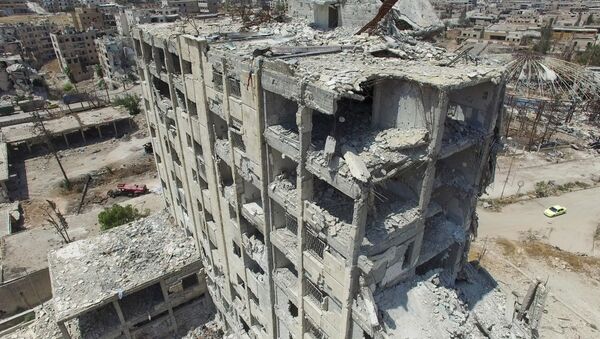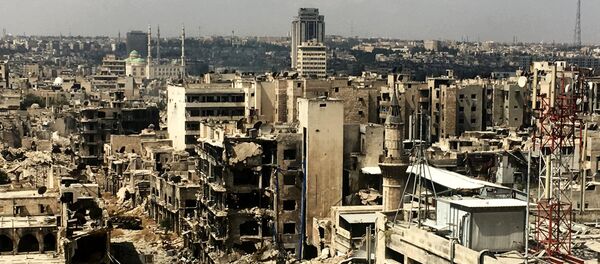Hussein Usman and his family were the first to return to their war-scarred house in the city’s Bani Zeid neighborhood where eight of them now live without running water and electricity.
“When in 2011, at the very start of the war, the militants seized our neighborhood, we ran away for these self-styled revolutionaries. Look what they’ve done to my house, my neighborhood, my country. We are safe now because we have the Syrian Army here. These soldiers are our children, that’s why we feel safe. As for the militants I advise them to lay down their arms,” Hussein Usman told RIA.
Before the war this upscale part of northern Aleppo was home to about 200,000 people. Now Bani Zeidis has been reduced to a pile of rubble with virtually no buildings left untouched by bombs and shells.
The militants had turned Bani Zeid into one big fortress from where they rained death on the city’s civilian neighborhoods from mortars and ‘hellfire’ guns.
Members of the so-called “moderate” Jaysh al-Islam group even used war chemicals against the residents of the city’s Sheikh Maqsood district, mainly populated by Kurds.
In July the Syrian Army and pro-government forces took control of the Castello Road – the main road leading into rebel-held areas in Aleppo, effectively cutting off the rebels' main supply route.
Even though there have been sporadic firefights flaring up in other parts of the city, the Syrian military insists that the terrorists will never be back again.
“We will rebuild our house, I’m sure about that. Other people will start coming back too and, working together, we’ll be able to rebuild this place. Everything will be all right,” Hussein said with confidence.





